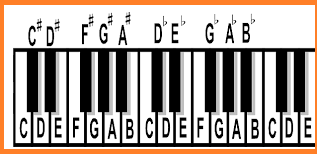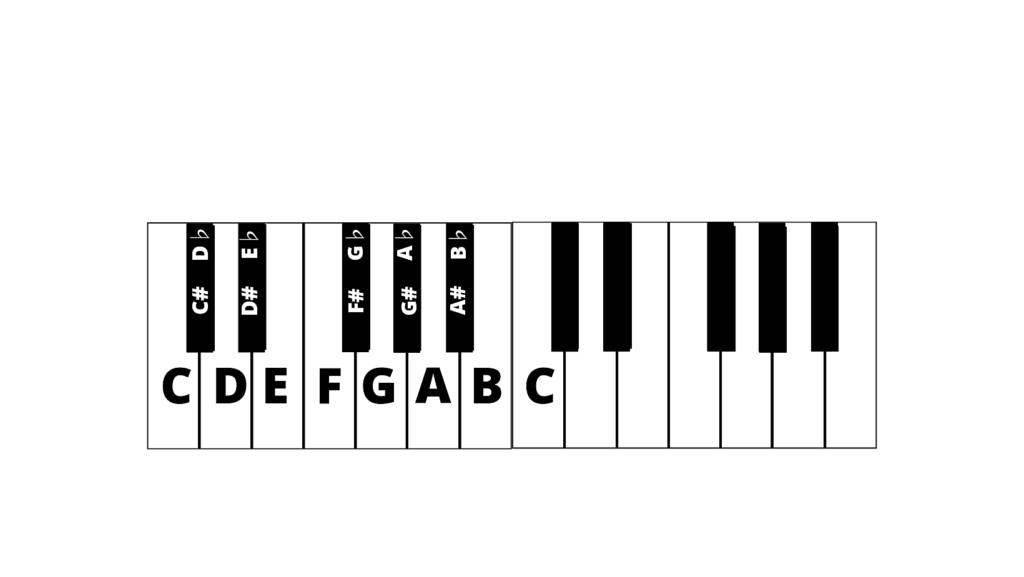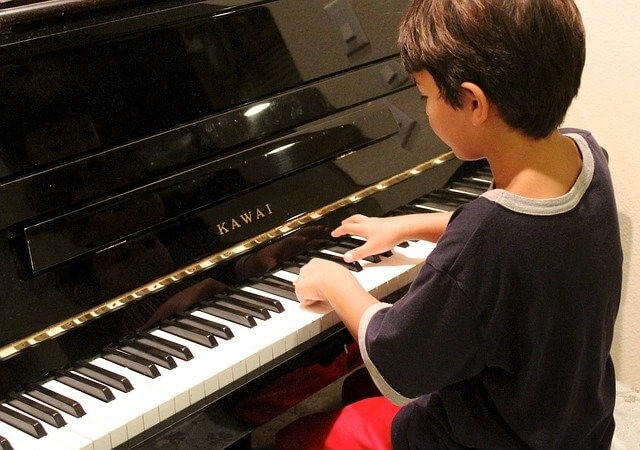
Learning a new instrument is fun. You acquire a new skill. However, the most crucial step while learning something new is to know that you are doing it right.
In this case, a step-by-step guide can direct you well. Similarly, for a piano beginner, learning through a guide that includes basics like how piano keys labeled, piano notes, and scales can start the journey in the right direction.
So, if you are someone willing to learn piano but don’t know where to start, dear reader, you are at the right place. Let’s begin with not-so-scary basics.
A Guide To Playing Piano as a Beginner
The beginning has to be comfortable. So, in this guide, I will share some basics to start your piano learning.
1. Get Your Posture Right
Maintaining the proper posture from head to toe is essential while playing the piano. A wrong posture can affect playability. Some beginner tips would be:
- Sit with a straight back
- Relax your shoulders, arms, elbows, and wrists
- Place both hands on the piano keys
- Try playing with the piano fingering rule
- Don’t put pressure on your fingertips
As a beginner, following it as a routine can be annoying. But with practice comes dexterity. So, keep up to it.
2. Get Familiar With Keys on Piano
The keys simply mean the buttons that play notes. A standard piano contains 88 keys that include 36 black and 52 white keys. Each key denotes a note.
If you see, the black keys follow a 2-3-2-3 pattern. These keys represent sharps# and flats 𝄬. The white keys are straightforward. They represent natural notes. In fact, you can play the entire C Major scale using white keys only.
3. Learn Piano Notes and Their Names
There are 12 different notes, 7 on white and 5 on black keys. If you go up to the right, you get a higher sound. Whereas, if you play the same notes lower down to the left, You hear its lower version.
You don’t have to worry about memorizing each note as every note is named with an alphabet. The notes follow A to G letters. For example, if we take the C Major scale, the scale will start from the root note C and go like C D E F G A B C.
The A to G pattern continues till the last key on the piano.
Let’s see the 12 notes From C.

As you can see, C# is also Db. D# is Eb. F# is Gb. G# is Ab. A# is Bb.
The flats denote minor scale. This way, the notes are named and identified.
4. Familiarize Yourself With Common Piano Terms
Apart from keys and notes, you must know a few other musical terms as a beginner.
Octave
The 8 notes (as you can see above in the C Major scale) including the root, are called an Octave. Three kinds of octaves are Lower, Middle, and Higher. The series continues after every 7 notes.
Interval
Though the notes are placed next to each other, there is a distance between two consecutive notes, known as Interval. For instance, the distance between C to D or C# to D#. The distance can be a Half step (Semitone) or a Whole step (Tone). | A Guide To Playing Piano as a Beginner
2 Half steps = 1 Whole step
So, C to D = Half step
C# to D# = Whole step
Nowadays, many platforms are providing piano lessons online. Well, you can start your piano learning with EnthuZiastic. It’s a beginner-friendly platform where you get to learn from experts. In fact, you can customize the lessons with your schedule.
Let’s move ahead.
5. Use Piano Fingering | A Guide To Playing Piano as a Beginner
There is no hard and fast rule for piano fingering as everyone uses different fingers for comfort. But there is a basic fingering rule that can be commonly used.
Each finger is named with a specific number:
- 1 – Thumb
- 2 – Index
- 3 – Middle
- 4 – Ring
- 5 – Pinky

Piano fingering makes the playing easier. You don’t need to juggle between the keys and fingers.
6. Learn Piano Scales | A Guide To Playing Piano as a Beginner
The scales are the colors that we use to create a melody. A basic understanding of scale is enough when you are starting out. So, don’t worry much and let’s move to the scales.
Different scales have unique characteristics. The two scales that are often used are Major and Minor. I will give you an easy way to identify if it’s a Major scale or Minor scale.
When you hear a tune that makes you feel complete and happy, it’s a Major scale. Whereas, the notes that give you a restless, sad, or uneasy feeling is a Minor scale. But it depends upon how you arrange notes using a minor scale. The tune will instantly sound different even if you change a single note.
Other than scales, there are chords. But we will learn the later part in the next guide as I don’t want you to learn in a rush.
Conclusion |A Guide To Playing Piano as a Beginner
The piano theory is an ocean. But I thought of sharing an elemental guide with you. Because as a beginner, you need to allow some time to grasp the basics first.
“It’s in the roots, not in branches.” So, first, master the basics.
See you in the next musical guide. Till then, keep improving!
Read More Earn Money by Uploading Notes in India | Sell Handwritten Notes

